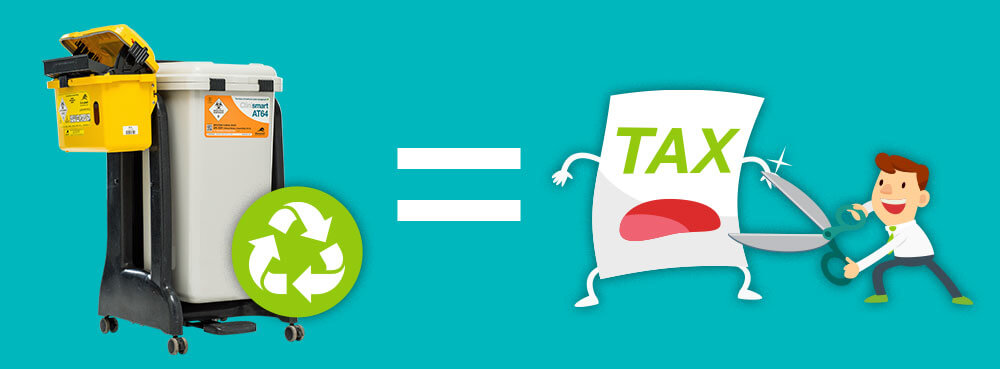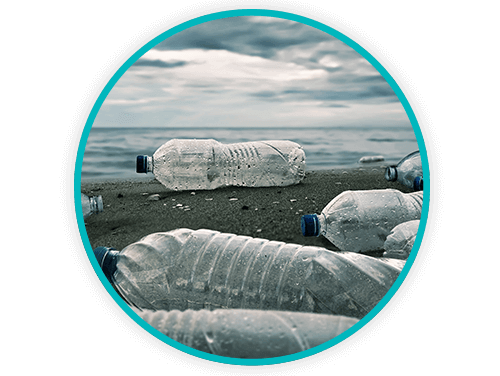UK Plastic Packaging Tax: How the Healthcare Market Can Change in Response

Editor’s note: This post was originally published in July 2022 and has been updated for accuracy and comprehensiveness in line with recent changes.
UK producers and retailers have been reckoning with the implementation of the Plastic Packaging Tax (PPT) since it took effect on 1 April 2022 – a tax that applies to all plastic packaging that contains less than 30% recycled content. On the same date in 2024, that tax is set to increase…
The UK government passed the tax to encourage manufacturers to switch to recycled or biodegradable packaging and reduce the use of virgin plastics. The tax has immediately impacted consumer pricing, with manufacturers and businesses passing the cost onto their customers. Since both the production and disposal of plastics contribute to the creation of greenhouse gases, this initiative plays a role in the larger Net Zero Strategy which sets out a roadmap for the NHS to eliminate the carbon emissions they can control and influence by 2045.
Read on to learn more about the UK Plastic Packaging Tax, its impact, its benefits, and some helpful methods for avoiding it in your facility.
TOPICS WE WILL COVER:
1 / 2024 Updates to the UK Plastic Packaging Tax.
2 / What is the UK Plastic Packaging Tax?
3 / What is the impact of the Plastic Packaging Tax?
4 / Are there benefits to the UK Plastic Packaging Tax?
5 / Methods for avoiding the Plastic Use Tax.
6 / Avoid the Plastic Tax with Sharpsmart reusable sharps containers.
2024 Updates to the UK Plastic Packaging Tax
Starting 1 April 2024 the rate of Plastic Packaging Tax will be increasing in line with the Consumer Price Index (CPI). This adjustment applies to all plastic packaging produced or brought into the UK.
It’s worth noting that there’s also a possibility of the government introducing an escalator to the Plastic Packaging Tac rate and a minimum recycled plastic threshold in the future – you can stay informed about regulatory changes by becoming part of our Network for Healthcare Heroes.
By increasing the Plastic Packaging Tax in line with CPI and contemplating an escalator, the government is reinforcing and maintaining the incentive to minimise the adoption of single-use plastics and opt for reusable solutions or recycled plastics in support of environmental targets.
The proposed update to the UK Plastic Packaging Tax means the rate outlined in section 45 of the Finance Act 2021 will be amended from £210.82 per tonne to £217.85 per tonne.
What is the UK Plastic Packaging Tax?
The UK Plastic Packaging Tax (PPT) is a levy on plastic packaging that contains less than 30% recycled content. The tax, which was announced in the 2018 Budget, officially came into effect in April 2022 with the goal of reducing the use of virgin plastics.
The tax applies to all plastic packaging products sold in the UK, including single-use items such as food packaging and plastic bags. Notable, reusable items manufactured from plastic are exempt. Manufacturers who import 10 tonnes or more of finished plastic packaging into the UK are required to register for the tax. On 31 March 2023, the time span for reporting purposes will change to the previous 12 months.
The tax is levied at a rate of £210.82 per metric tonne. In order to comply, manufacturers and retailers will need to ensure that their plastic packaging contains at least 30% recycled content or face a tax bill.
What is the Impact of the Plastic Packaging Tax?
Companies are working to offset the cost of the plastic packaging tax by passing the cost on to customers. This has already been seen in the form of higher prices for goods sold in plastic packaging. The UK healthcare market faces a tough challenge with many of the everyday items used in hospitals, such as syringes and IV tubes, not always being readily avai lable in recycled or reusable versions. In order to avoid increases in cost, GP practices, hospitals, clinics and other healthcare settings will need to find alternatives, particularly when it comes to clinical waste and sharps containers.
lable in recycled or reusable versions. In order to avoid increases in cost, GP practices, hospitals, clinics and other healthcare settings will need to find alternatives, particularly when it comes to clinical waste and sharps containers.
Are There Benefits to the UK Plastic Packaging Tax?
While the Plastic Packaging Tax is putting the squeeze on many manufacturers and retailers, it offers many long-term benefits, the most significant of which is a reduction in plastic waste and the harmful emissions generated from their manufacture and subsequent disposal.
As well as motivating businesses to shift from plastics to other materials or opt for reusable solutions, the tax has caused many companies to seek out innovative ways to avoid the tax, this includes healthcare organisations and facilities that rely heavily on plastics – from equipment such as syringes packaged in plastics to ensure sterility to plastic waste containment systems.
The plastic packaging tax is likely to cause some challenges in the short term. This is why it’s important to find ways to avoid the tax – one of which is by using reusable containers.
Methods for Avoiding the Plastic Use Tax
So how can you avoid the increased cost associated with the plastic packaging tax and save your site money? In healthcare settings, the priority is always safety, infection prevention, keeping environments sterile and patients and staff safe. Oftentimes plastic has been a partner in this process. There are a few ways however to remain safe and sterile while also reducing your single-use plastic consumption and avoiding cost increases. Here are a few ways:
1. Switch to recycled or biodegradable packaging
Incorporate more recycled materials in the packaging you choose, such as supporting manufacturers who use paper or cardboard, or switch to compostable or biodegradable plastics.
Not only will this help you avoid the tax, but it will also be better for the environment. Partnering with a team specialising in eco-friendly medical packaging can help medical companies make the switch.
Use recycled plastic in your packaging. This includes using recycled materials such as PET or HDPE in your packaging. Recycled plastic can often be just as strong and durable as virgin plastic, but it costs less and helps to reduce waste.
2. Move to glass or metal packaging
Glass and metal are both 100% recyclable so companies can reuse them repeatedly. Options like these, that are plastic-free, will of course be exempt from the tax. However, this option may not be feasible for all organisations as glass is heavy and breakable while metal has its own drawbacks.
3. Use less packaging in general
Using smaller packaging or eliminating unnecessary packaging altogether is another step in the right direction. For example, many companies are now selling products in bulk, eliminating the need for packaging all together.
Unfortunately, this option is often not possible for healthcare facilities due to the need for sterile packaging.
Additionally, there’s another effective way to avoid the tax without compromising hospital hygiene, staff and patient safety, or Net Zero initiatives – reusable products!
Avoid the Plastic Tax with Sharpsmart Reusable Sharps Containers
If you are looking for new ways to reduce your plastic footprint and avoid the UK Plastic Packaging Tax, Sharpsmart can help. We offer a wide range of reusable sharps containers, which are exempt from this tax.
Traditionally, sharps containers were made of either cardboard or single-use plastic and were incinerated with the sharps inside them. Sharpsmart recognised that no one throws away their rubbish bin every time they remove the bag of rubbish from it. We thought the same could be done with sharps disposal. As a leader in sustainable packaging, Sharpsmart is committed to helping our customers find the best possible sharps disposal solutions for their waste.
Not only are reusable containers more environmentally-friendly, but they’ll help you avoid additional cost increases triggered by the plastic packaging tax which may impact the amount of budget available that can be directed towards improvements in patient care. Additionally, we designed our sharps containers in a smarter way. While other containers haphazardly pile sharps inside, causing lots of wasted pockets of space and the need to dispose more often, our containers are designed to horizontally stack sharps, saving significant space. This efficient use of space reduces the amount of times the container needs replenishing which helps to reduce labour time, driving both cost and labour efficiency.
Our commitment is to help trusts and providers find innovative ways to remain safe, sustainable and cost-conscious. Contact us today to learn more about how we can help you avoid the plastic packaging tax.
Let's Talk!
Your time is valuable, and we don’t want to play hard to get. You can either phone us directly on the details listed on our contact page, or feel free to fill out this short form and one of our team members will get back to you as quickly as possible.
